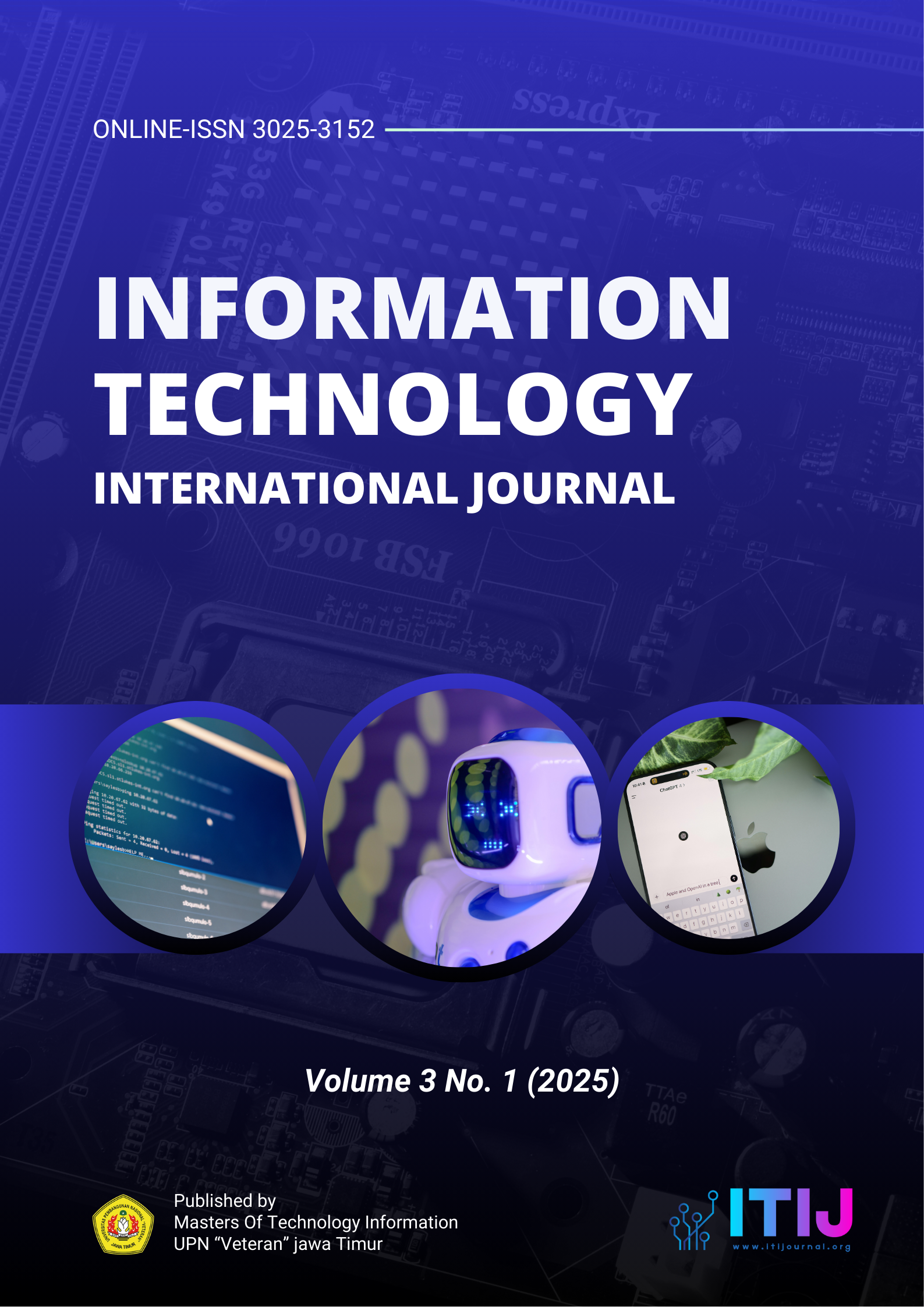Architecting the e-RES (Electric Bike Rescuer) Application Based on Microservices Architecture
DOI:
https://doi.org/10.33005/itij.v3i1.37Keywords:
e-RES, Electric Bike, Emergency Assistance, Microservices, Mobile ApplicationAbstract
The e-RES application is a solution designed to assist electric bike riders facing technical issues on the road. Utilizing mobile technology and a microservices-based architecture, this app enables riders to connect instantly with nearby technicians in real-time. This journal discusses the architecting process of e-RES, including system architecture design and preparation of essential diagrams such as a Use Case Diagram, Class Diagram, Sequence Diagram, Activity Diagram, and Entity Relationship Diagram.
Downloads
References
[1] I. Oyeyemi Olayode, E. Jamei, and F. Justice Alex, “Integration of e-bikes in public transportation based on their impact, importance, and challenges: A systematic review,” Multimodal Transportation, vol. 4, no. 1, p. 100182, Mar. 2025, doi:10.1016/j.multra.2024.100182.
[2] A. Ganje, “Microservices in Organizations,” Journal of Software Engineering and Applications, vol. 18, no. 02, pp. 76–86, 2025, doi: 10.4236/jsea.2025.182005.
[3] X. Liu et al., “Research on Microservice Architecture: A Tertiary Study,” SSRN Electronic Journal, 2022, doi: 10.2139/ssrn.4204345.
[4] L. M. Elnaghi and Moawad. Ramadan, “Microservices Ar vices Architectur chitecture: Evolution, Realizing Benefits, and olution, Realizing Benefits, and Addressing Challenges in the Modern Software Era -A systematic literature review,” Future Computing and Informatics Journal, vol. 8, no. 2, pp. 12–18, 2023.
[5] J. A. Suthendra and M. A. I. Pakereng, “Implementation of Microservices Architecture on ECommerce Web Service,” ComTech: Computer, Mathematics and Engineering Applications, vol. 11, no. 2, pp. 89–95, Dec. 2020, doi: 10.21512/comtech.v11i2.6453.
[6] S. Saurav, “The Impact of Microservices Architecture on System Scalability,” American Scientific Research Journal for Engineering, Technology, and Sciences, vol. 102, no. 1, pp. 140–148, Jun. 2025.
[7] S. Sharma, “The Impact of Microservices Architecture on System Scalability,” American Scientific Research Journal for Engineering, Technology, and Sciences, vol. 102, no. 1, pp. 140–148, Jun. 2025.
[8] C. C. Ekechi, C. D. Okeke, and H. E. Adama, “Enhancing Agile Product Development with Scrum Methodologies: A Detailed Exploration of Implementation Practices and Benefits,” Engineering Science & Technology Journal, vol. 5, no. 5, pp. 1542–1570, May 2024.
[9] C. J. Stettina and J. Garbajosa, Agile Processes in Software Engineering and Extreme Programming, vol. 475. Amsterdam: Springer Nature Switzerland, 2023. doi: 10.1007/978-3-031-33976-9.
[10] Adriana N Dugbartey and Olalekan Kehinde, “Optimizing project delivery through agile methodologies: Balancing speed, collaboration and stakeholder engagement,” World Journal of Advanced Research and Reviews, vol. 25, no. 1, pp. 1237–1257, Jan. 2025, doi: 10.30574/wjarr.2025.25.1.0193.
[11] S. Di Meglio, V. Pontillo, and L. L. L. Starace, “REST in Pieces: RESTful Design Rule Violations in Student-Built Web Apps,” Jul. 2025.
[12] A. Ehsan, M. A. M. E. Abuhaliqa, C. Catal, and D. Mishra, “RESTful API Testing Methodologies: Rationale, Challenges, and Solution Directions,” Applied Sciences, vol. 12, no. 9, p. 4369, Apr. 2022, doi: 10.3390/app12094369.
[13] A. Saleh, R. Morabito, S. Tarkoma, S. Pirttikangas, and L. Lovén, “Towards Message Brokers for Generative AI: Survey, Challenges, and Opportunities,” Feb. 2024.
[14] V. Rampérez, J. Soriano, D. Lizcano, and C. Miguel, “Automatic Evaluation and Comparison of Pub/Sub Systems Performance Improvements,” Journal of Web Engineering, Apr. 2022, doi: 10.13052/jwe1540-9589.2144.
[15] S. R. Gothi, “Event-Driven Microservices Architecture for Data Center Orchestration,” International Journal on Science and Technology, vol. 16, no. 2, Apr. 2025, doi:10.71097/IJSAT.v16.i2.3113.
Downloads
Published
How to Cite
Issue
Section
License
Copyright (c) 2025 Jefri Abdurrozak Ismail

This work is licensed under a Creative Commons Attribution 4.0 International License.
Starting with Volume 3, Issue 1 (2025), all articles published in ITIJ will be licensed under a Creative Commons Attribution (CC BY) license. This new license replaces our previous Creative Commons Attribution-NonCommercial-NoDerivatives (CC BY-NC-ND) license.



